CLAMPING TOOLS
The clamping tools that are used in fitting shop are called vices and this is used for holding the jobs firmly during various fitting operations.BENCH VICE:
It is a common tool used for holding jobs. It consists of cast iron body and cast iron jaws. Two jaw plates are fitted on both the jaws. Jaw plates are made up of high carbon steel and are wear resistant.One jaw is fixed to the body and the second slides on the square threaded screw with the help of a handle. The jaws are opened up to required length, job is placed in the two jaws and is fully tightened with handle. It is fixed at the four corners of the fitter’s working bench, and it is up to the waist height.
LEG VICE:
It is made up of mild steel and the jaws are cast steel, it is stronger than the parallel jaw bench vice and used for heavy work. It is used when the operation such as chipping or hammering is to be performed. It is fixed on the bench or grouted in the foundation.
HAND VICE:
Hand vice is used to grip very small objects. These are made in different shapes and sizes. It consists of the two steel legs hinged together at the bottom. A spring is provided between two legs. The jaws maybe adjusted from a flange nut.
PIN VICE:
Pin vice is used to hold wire or small diameter rods. It is also used for grinding small drills. It consists of a small chuck made up of tool steel and a mild steel handle.
PIPE VICE:
It is used to hold pipes. It consist of a vertical screw with square threads. A handle is attached on the top of the screw. A movable jaw is fixed on the lower end of the screw. It grips the pipe at four points. The jaws of this pipe vice are v-shaped. This vice can be fixed on the bench or it can be grouted.
MEASURING AND MARKING TOOLS
TRY SQUARE:
It is used for checking squareness of two surfaces. It consists of a blade made up of steel which is attached to a base at 900. The base is made up of cast iron or steel. Try square is also used for marking right angles and measuring straightness of surfaces. It is an instrument used to draw straight lines at right angles to a true surface.
BEVEL PROTECTOR:
It consists of a steel dial divided into 360 divisions. A bevel protector is a graduated circular protector with a pivoted arm, used for measuring or marking off angles. Sometimes vernier scale is attached to give more precise readings. It has wide application in architectural and mechanical drawing, although its use is decreasing with the availability of modern drawing software.Universal bevel protector is also used by toolmakers, as they measure angles by mechanical contact they are classed as mechanical protector.
COMBINATION SET:
It is a multi-purpose instrument that can be used as a protector, a level, a mitre, a center square and a try square.
CENTER SQUARE:
It is used to find center of the round job. It consists of a straight edge and two arms. For finding out the center, the round job is placed between two arms.
SCRIBER AND SURFACE GAUGE:
Scriber is made up of high carbon steel and is hardened from the front edge. It is used for marking of lines. Scriber mounted on vertical bar is called surface gauge. A heavy base is provided at the bottom. There is a nut fixed on the bar and by this nut the scriber can be loosened and fixed anywhere in the bar in this way the inclination can also be varied. It is kept on the surface plate during any measurement. Primarily it is used along V block to draw parallel to a surface.
UNIVERSAL MARKING SURFACE GAUGE:
It consists of a heavy base, a scriber and a bar. The scriber can be adjusted to any position with the help of screw and nut. It is used for marking purposes. It is used to draw parallel lines at any desired height with respect to the surface plate.
DOT PUNCH:
It is used for marking dotted lines. It is made up of high carbon steel or high speed steel. One end is sharpened. Hammering is done on the second end while working. Angle of the punching end is 600.
CENTER PUNCH:
It is like a dot punch except the angle of the punching end is 900. It is used to mark the center of the hole before drilling.
SURFACE PLATE:
It is used for testing the flatness, trueness of the surface. It is made up of cast iron or graphite. Its upper face is flat to form a very smooth surface. It is covered with a wooden cover while not in use. It is used to test a try square and this plate is used as a base for V-block, sine bar etc. and other measuring instruments during measurement.
ANGLE PLATE:
It consists of cast iron in which two ribs of metal are standing at right angle to each other. Holes are provided for clamping purposes. It is used for holding and supporting the jobs.
V-BLOCK:
It is used for supporting as well as marking purposes. Round jobs are generally placed on it to mark center line. It is made up of cast iron or steel. It is used along with U-clamp to hold cylindrical piece during measurement. It holds the job in ‘V’ portion.
STEEL RULES:
These are made up of stainless steel and are available in many sizes ranging from ½ to 2 ft. These are marked in inches and millimetres. The edges of steel rules should be protected from rough handling.
VERNIER CALIPER:
It is a precision instrument used for measuring lengths and diameters. It can be used for measuring internal and external dimensions. It consists of a graduated bar of rectangular section. It has two jaws, one is movable with a small vernier head and other is fixed. A fine adjustment nut is also attached to the head. The dimension is measured by the jaws and is indicated on graduated bar. Minimum dimension that can be expressed on vernier caliper is known as least count. The least count of vernier is 0.001” or 0.02mm. Generally the material of all parts is stainless steel.
MICROMETER:
It is used for measuring diameters or thickness of any job. It is more precision than vernier caliper. It consists of a hook type frame. A hard anvil is screwed on one end. On the second end a spindle moves to and for carrying another small anvil on its end. By turning the spindle knob the job diameter is measured from the scale. The sleeve on the spindle is graduated. Another barrel which is fitted on outer side of the sleeves is attached with the spindle. This barrel is also graduated. A ratchet is provided on the side of the spindle.The graduation on micrometers are available in inches as well as in millimetres. The least count of the micrometer is generally 0.001” or 0.0001” or 0.01mm or 0.05mm.
DIAL INDICATOR:
A round gauge in which a pointer moves over a graduated scale. The movement is magnified through links. A spring loaded plunger is fitted on the bottom. And a small round point is provided on the lower end of the plunger. It touches the job while measurement. It is generally used to check the run out or ovality of jobs.
DIVIDERS:
These are made of steel. Dividers have two legs having sharp feet. These are hinged at the top. It is used for marking arcs, dividing a line or transferring the dimension.
CALIPERS:
It is generally used to measure the inside or outside diameters. It is made in different sizes and shapes. It consists of two bent legs connected at one end by means of rivets or bolts. The edges are made to just touch the job, then the dimension is measured with the help of steel rules. Types are:
1. Outside caliper
2. Inside caliper
3. Spring caliper
4. Jenny caliper or odd leg caliper
GAUGES:
1. Depth gauge:It consists of a stainless steel head and a beam. The head slides along the beam and can be tightened with the help of screw. The beam is graduated in inches or millimetres.
2. Feeler gauge:
It is used to check the gap between two matting parts. It consists of a number of metal leaves. These leaves have different thickness and are fastened together in a small holder. The material of the leaves is stainless steel.
3. Radius gauge:
It is just like feeler gauge. Every leaf has different radius. It’s of two types internal and external. It is used to check the radius of outer and inner surfaces.
4. Vernier height gauge:
It is used to measure the height of work piece. It consist of a vertical bar mounted on a heavy base. A sliding head with pointer is carried on to the rectangular bar. The bar and head are graduated. Height gauge is also used as marking the lines as specific heights. It is always used by placing it on surface plate. The base of the height gauge is made up off cast iron and the beam is made up of stainless steel.
5. Thread gauge:
It is used to check the pitch of threads. It consists of a number of leaves. On every leaf cuts are provided to fit into thread while checking. All leaves are assembled in a holder. The material of the leaves is stainless steel.
6. Wire gauge:
It is used to check the diameters of wires. It is made up of a steel sheet disc.
CUTTING TOOLS
HACKSAW:
It is used for cutting of rods, flats etc. The blade of the hacksaw is made up of high carbon steel or speed steel. And the frame is made from mild steel. The blade is placed inside the frame and is tightened with the help of flange nut. The teeth of saw blades are generally forward cut. The hacksaw should be used in straight direction otherwise it will result in breaking of the blade. The length of blade varies from 8” to 14”, but generally 12” blade is used in fixed frame hacksaw.The tightness and width of the blade are 1mm and ½” respectively. Blades are classified as:
a. Depending upon the direction of cut
1. Forward cut
2. Backward cut
b. Depending upon the pitch of the teeth
1. Coarse (8-14 teeth per inch)
2. Medium (16-20 teeth per inch)
3. Fine (24-32 teeth per inch)
Types of hacksaw frames:
1. Fixed frame
2. Adjustable frame
Pitch of hacksaw:
It is the number of teeth on blade in one centimetre. Hacksaw blades with small pitch are used for thin sections and the large pitch are used for thick sections.
Use of hacksaw:
The material to be cut with hacksaw is clamped into vice. Marking is done with the help of file. The handle of hacksaw is held in right hand and the left hand is kept on the frame. Start sawing at the marking, keeping the blade slightly inclined to the horizontal. The saw is brought to the horizontal position after starting the cut. Thee hacksaw should be moved perfectly straight and horizontal. The speed of the hacksaw should be 15-25 strokes per minute. Sufficient pressure should be given to the frame with left hand while in forward stroke. Water can be used as coolant for sawing.
Care of hacksaw:
1. Always move the hacksaw in perfect straight and horizontal direction.
2. Never tilt the frame while sawing.
3. While cutting thin sections wooden piece must be clamped along with the work pieces.
4. Do not use a new blade in the cut made by another blade.
5. The blade should be tightened sufficiently.
FILES:
It is also a multi tooth tool. It is used to remove material by rubbing it on the metal. Files are available in a number of sizes, shapes and degree of coarseness. Classification of files:
1. Rough (20 teeth per inch)
2. Bastard (30 teeth per inch)
3. Second cut (40 teeth per inch)
4. Smooth file (50-60 teeth per inch)
5. Dead smooth (100 teeth per inch)
Rough and bastard are the big cut files. These are used for rough cutting where the material removing is more. These files have bigger teeth. Dead smooth and smooth files have smaller teeth and are used for finishing work. Second cut file has the degree of finish midway between bastard and smooth file.
Files are available in a number of shapes and sizes. The length of files vary from 4” to 14”. The shapes are available are flat, square, round, triangular, half round etc.
Classification on the basis of number of cuts:
Files are classified into two categories i.e. single and double cut files.
In single cut the teeth are cut in parallel rows at an angle of 600 to the face. Another row of teeth is added in opposite direction in case of double cut files. Material removing rate is more in double cut file than in single cut file.
PITCH
The number of teeth in one centimetre is called a pitch of the file. The number of teeth varies from 10 to 40 in one centimetre.
USE OF FILE
The file should be used in perfect horizontal position. Most of the files have their teeth pointing forward. So the pressure should be applied on the forward stroke only. The work is held in vice after marking. Keeping right hand on the handle and left hand on the front end, file is moved to and fro with a speed of 15 to 25 strokes per minute. Rough files are used, where material removing is more and fine files are used for finishing work.
CARE OF FILES
The following points that must be kept in mind while using and storing the files:
1. The teeth should be protected from excessive wearing.
2. Files should be stored in wooden racks.
3. File cleaner should be used for cleaning the files.
4. When not in use, files should be coated with oil.
SOFT EDGE FILE
It is a file having one edge without teeth. Soft edge file is used in complex shaped work pieces in order to avoid cutting with upper side of the file.
CHISELS:
These are used for chipping away the material from the work piece. These are made up of high carbon steel generally 6” to 8” long. The top is flattened and a sharp cutting edge is made on the bottom side. Chisels are classified on the basis of shapes and width of the cutting edge. Commonly used forms of chisels are flat, cross cut, half round and diamond point chisel.Cutting angle of chisel is kept as under:
1. For hard material – 700 to 750
2. For medium hard material – 600
3. For soft material – 400
A flat chisel is used for chipping a large surface. This chisel is used at room temperature so it is called as cold chisel.
A cross cut chisel is narrow chisel and thickness of the cutting edge is broader than flat chisel. It is used for cutting grooves.
A half round chisel is used to cut oil grooves in the bushes and also clearing small round corners.
A diamond point chisel is used for chipping plates. It is also used for cleaning the corner of the slot cut at an angle or of square shop.
Chipping with chisel:
The work piece is clamped in into the vice. The material is removed with the help of chisel by hammering it with hand hammer. The chisel is held at an angle to the work piece. The chisel is held firmly while striking it.
STRIKING TOOLS
Hammer is the only tool generally used for striking in fitting shop. These are used for chipping, fitting, punching etc. A hammer consists of a heavy iron body with wooden handle. The weight ranges from 0.25 to 2 kg. The classification of hammer is done based on the shape of the peans. If the shape of the pean is ball or spherical then it is called as Ball pean. If the pean is parallel to the handle of the hammer then it is Straight pean hammer. If the pean is across the handle of t he hammer then it is Cross pean hammer. If the shape of the pean is same as face, then it is Double ended hammer.
MISCELLANEOUS TOOLS
DRILL
The tool used for making round hole is called a drill. It is made up of high speed steel. There are several types of drills. Most common type of drill is flat drill. It is flat in shape at the cutting edge and it is the cheapest drill. It can be used only for drilling a hole of smaller depth. Twist drill is another form of drill. It consists of spiral flute. This is also further divided into two parts i.e. if the shank is parallel then it is parallel shank twist drill. If the shank is tapered then it is tapered shank twist drill. The chips are driven out of the hole through the flutes.
REAMER
It is used to finish the drilled hole. It has many cutting edges.
COUNTER SINK
Counter sink is tapper cutter used to make the hole cone shaped from the upper end. It is made for fitting screws and nails.
COUNTER BORE
It is used to enlarge a portion of hole. It is also made for fitting the heads of bolts and screws.
TAPS
Taps are used for making internal threads. It is inserted into the face of the hole at right angle. In hand tapping three taps are commonly used. Tap have toothed body with a cylindrical shape. It also consists of a flute and the taps are available in a set of three taps namely Taper, intermediate and plug Taps and during tapping it is used in the same order. The tap is hold by the tap holder and before tapping hole must be drilled to the size of the root diameter of the thread. Before tapping tap must be held at right angle to the plane of the work piece. Remember if 1st tap is rotated clockwise two rounds, then also rotate one round of same tap anticlockwise.
DIE AND DIE STOCK
Die and die stock are used for cutting external threads. Dies are made from tool steel and have internal threads. Before starting the operation the job is held firmly in a vice or by any other job holding devices. The proper die is selected for the desired threading and then starting point of the job is chamfered so that the die is properly adjusted on the job. By holding the die into die stock, the handle is rotated by hand.





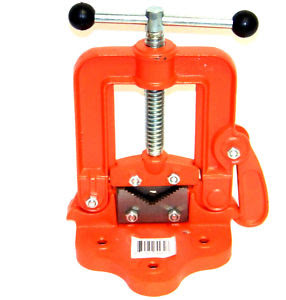



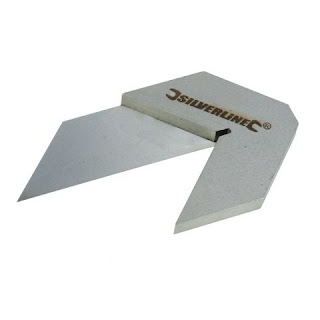


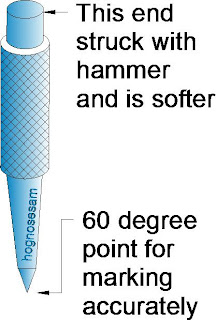

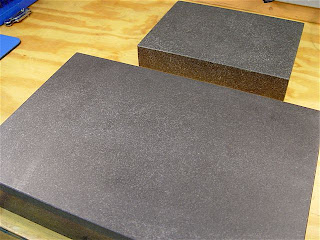

























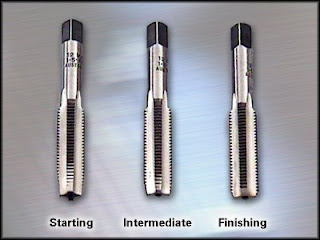


it is very helpful
ReplyDeleteNice blog.
ReplyDeleteThis information are very useful for shopfitting services.
Thanks for sharing with us.
Shopfitters South Africa
Outstanding,,,helpful material
ReplyDeletePipe Fittings are used to connect different apparatus, equipment and to change direction of flow in a piping system.
ReplyDeletemalleable iron fittings
Outclass
ReplyDeleteThis was really a informative post and thanks for sharing
ReplyDeleteweld-neck-flange
Awesome!Very useful!ALL THE BEST
ReplyDeleteThe simple pendulum is a common physics experiment and it helps students to learn a lot of basic physics principles. I wish I had landed on this page while in school since it has a report which has been written according to the required format but I will be recommending it to our clients who are majorly students accessing our Quality Personal Statement Writing Help.
ReplyDeletesuper ................
ReplyDeleteSuper duper
ReplyDeleteThis presentation is very educative,keep it up and God bless u,amin
ReplyDeleteIf is out of size screw ,first choose trade that you want make ,then nut must be bore size of the end trade .Screw has two diameter ,inner and outer so ,nut bore must be size of the inner diameter + 0.1mm larger .
ReplyDeleteautomated welding
Really useful....
ReplyDelete
ReplyDeleteGreat goods from you, man. I have understand your stuff previous to and you're just extremely great. I actually like what you've acquired here, really like what you're saying and the way in which you say it. You make it entertaining and you still take care of to keep it wise. I can't wait to read far more from you. This is really a tremendous web site. mechanical engineering edmonton
great.........
ReplyDeleteGreat work. Very useful information. If you want to know more about this Search here
ReplyDeleteमुझे यह जानकारी अच्छा लगा
ReplyDeleteIt's essential that you love where you live. Staying in your home should make you happy. For people who work from home,it is even more important than their home is one they enjoy. A great way to increase how you feel inside is by completing home projects that need to be done.If you are going to sell your home and it does not suit the buyer, they can always fix it to satisfy themselves.Make Premium Look By Using Home improvement tools .
ReplyDelete
ReplyDeletewindshield replacement
windshield repair
auto glass
auto glass repair
auto glass replacement
aero auto glass
https://aeroautoglass.com/
Nice it's helpful to me
ReplyDeleteBlue-Line Taxi is an Airdrie based company, whose mission is to provide reliable, timely and safe taxi service by using complete, in car credit and debit payment access, along with latest navigation technology. Rely on Blue-Line Taxi for high quality service in Airdrie, Balzac, Cross-filed, and Rocky View Countryside.Blue-Line Taxi provides complete taxi service using the latest equipment and technology to facilitate our clients. Our well trained professional drivers know the ins and outs of the Airdrie and all the surrounding areas, which ensures stress free and time efficient rides to our customers.In addition to stress free ride, our management ensures that our driver must take most economical route to your destination at all times.Our goal is to provide high quality, safest and quickest service at a fair price. With our highly experienced staff, we can accommodate most requirements, cut back on waiting times and get you taxi within minutes.
ReplyDeleteinfo@bluelinetaxi.com
(403) 479 1880
Airdrie, Alberta
Financial Advisor
ReplyDeleteAmit has an exceptional understanding of the financial markets and how economic reports can impact the mortgage industry. Amit graduated with a Bachelors of Business Administration with a Major in Finance. He was also one of the very few within the State of Texas to meet the standards to achieve the designations to meet the rigorous standards of The Wealth Preservation Institute (Benton, MI) as a Certified Wealth Preservation Planner™ (CWPP™) and Certified Protection Planner™ (CAPP™).
Irving, TX 75062, USA
The feeling of freedom and independence is increased by vehicle conversions with multiple seating options which give the passenger the flexibility to choose where they sit on any journey.Niche relevant backlinks
ReplyDeleteThis is such a great resource that you are providing and you give it away for free. I love seeing blog that understand the value of providing a quality resource for free.SEO backlinks Strategy
ReplyDeleteThis is a good post. This post gives truly quality information. I’m definitely going to look into it..Matka game
ReplyDeleteGood website! I truly love how it is simple on my eyes and the data are well written. I am wondering how I could be notified whenever a new post has been made. I’ve subscribed to your feed which must do the trick! Have a nice day! watch youtube videos without ads
ReplyDeleteWin diamond experts will help you suggest, offering the best cutting tools that aptly suits your needs and Diamond Lapping Paste Manufacturers in Chennai.
ReplyDeleteOne of the leading Diamond Cutting Tools Manufacturers in Chennai with 18 years of experience offering the top quality tools with the guidance to use those tools
ReplyDeleteBest rated digital marketing agency in Pakistan offering quality social media marketing, seo, web design and development services to maximize your roi and increase your business sales.
ReplyDeleteNice 👍👏👏👏👏
ReplyDeleteThis comment has been removed by the author.
ReplyDeleteThis comment has been removed by the author.
ReplyDeleteairdrie cab is an Airdrie based company, whose mission is to provide reliable, timely and safe taxi service by using complete, in car credit and debit payment access, along with latest navigation technology. Rely on Airdrie yellow cab for high quality service in Airdrie, Balzac, Cross-filed, and Rocky View Countryside. YellowTaxi provides complete taxi service using the latest equipment and technology to facilitate our clients. Our well trained professional drivers know the ins and outs of the Airdrie and all the surrounding areas, which ensures stress free and time efficient rides to our customers.In addition to stress free ride, our management ensures that our driver must take most economical route to your destination at all times.Our goal is to provide high quality, safest and quickest service at a fair price. With our highly experienced staff, we can accommodate most requirements, cut back on waiting times and get you taxi within minutes.
ReplyDelete